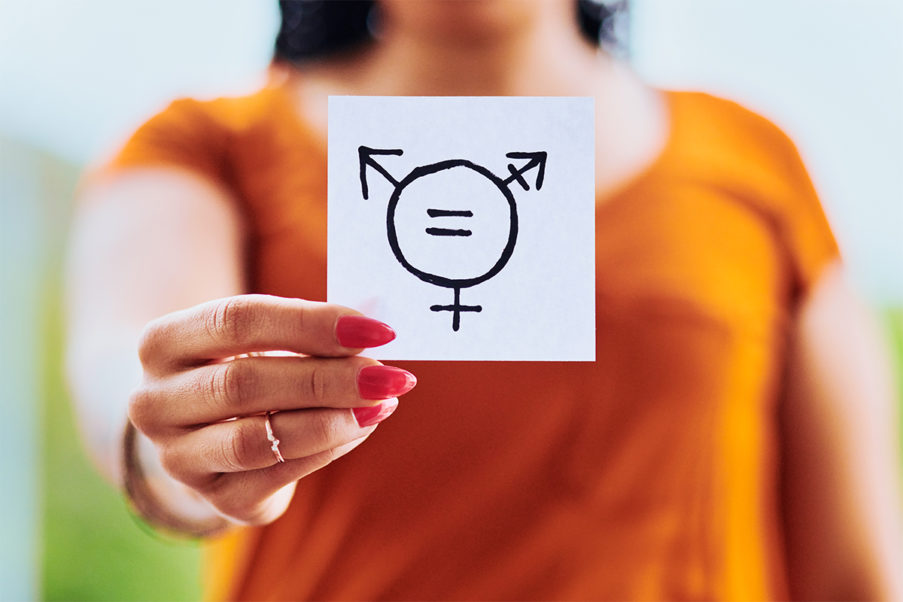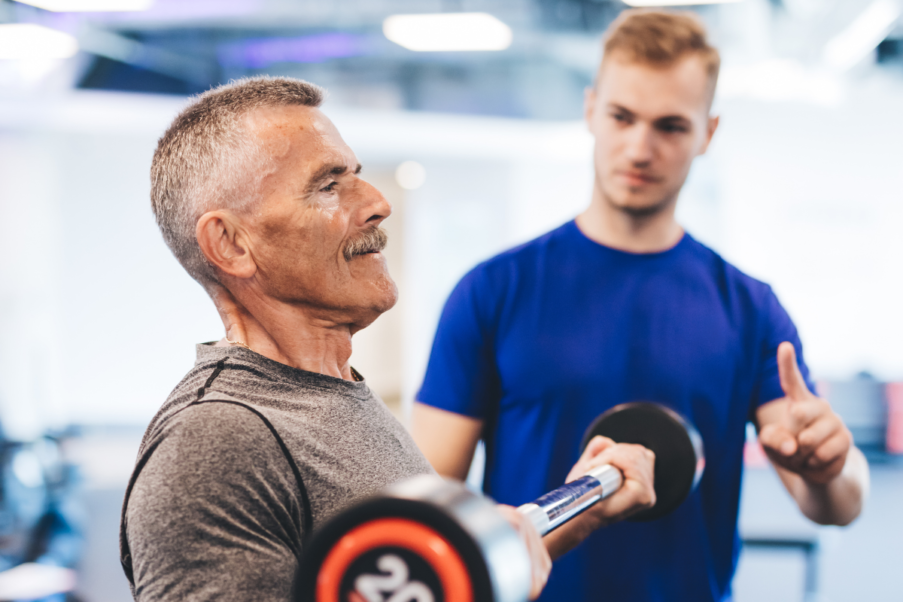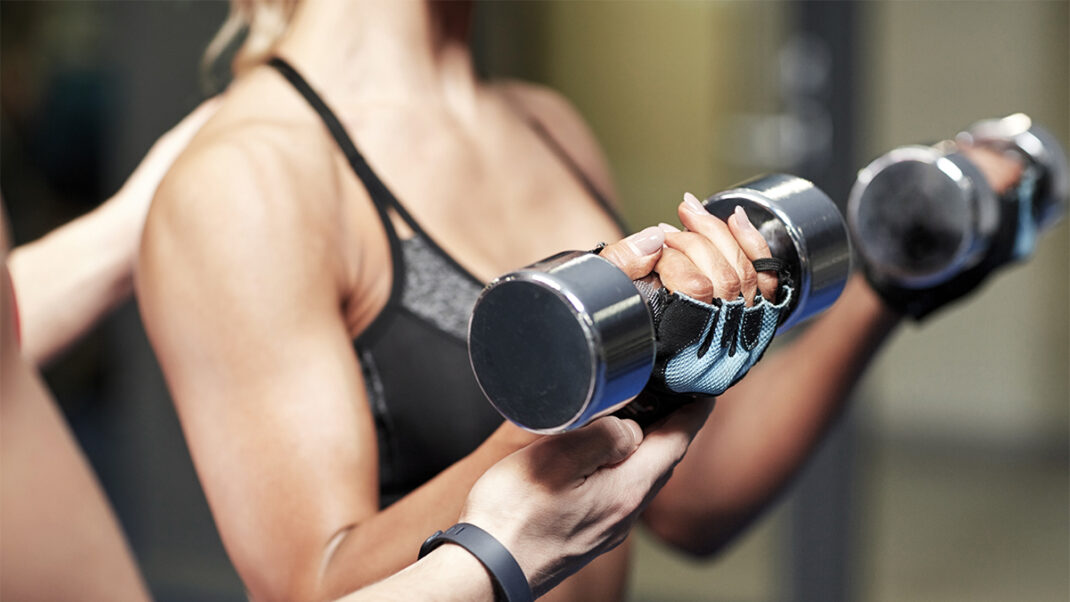Training During Ramadan
Practical insights and strategies to ensure your training remains impactful during Ramadan.
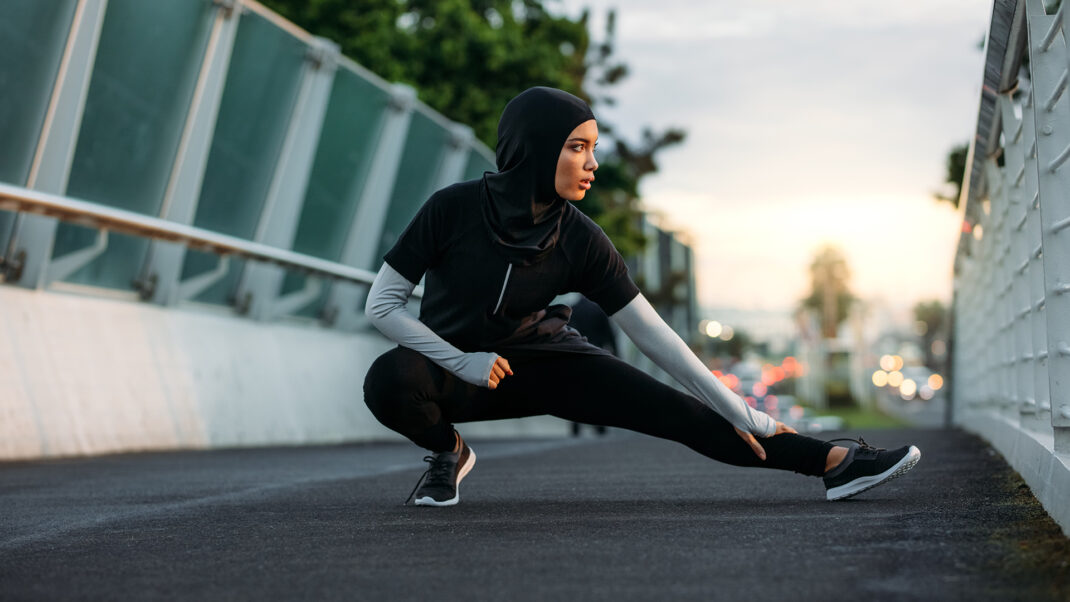
Ramadan is a period marked by fasting and increased devotion for Muslims worldwide. As practitioners abstain from food, drink and certain activities from sunrise to sunset, it presents unique challenges and considerations for fitness training during Ramadan.
Gain practical insights into managing workouts, addressing nutrition and fostering cultural sensitivity to ensure your training remains impactful during this significant period. Embrace these strategies to elevate your support for Muslim clients and foster inclusivity within your fitness business.
Understanding Ramadan
Ramadan is the ninth month in the Islamic calendar. In the Quran, it is mentioned [2:185] that one of the five pillars of Islam is fasting. While healthy Muslims are asked to fast to fulfill this pillar of Islam, those with illnesses or who are traveling are permitted to avoid fasting. Illnesses could be diabetic, autoimmune diseases, chronic diseases and others that are a risk to one’s health.
Women who are menstruating also avoid fasting and praying. While women who are pregnant or breastfeeding may avoid fasting during Ramadan, there are women who choose to fast while pregnant or breastfeeding, and some Muslims manage diabetes while fasting. Muslims who do not fast due to traveling or menstruation will need to make up their missed fast, and those who cannot fast due to illnesses are asked to pay money to feed those in need.
In addition to the month of Ramadan, there are days outside of Ramadan that are also recommended to fast, such as Mondays and Thursdays during the week, the first nine days of the last month in the Islamic calendar (Dhul Hijjah), and other days within the Islamic calendar. Fasting during Ramadan and other days of the year are not entirely the same as intermittent fasting. The Islamic traditions of fasting (Islamic fasting) requires the person to abstain from eating food, drinking beverages, taking medications (anything going down the throat) and engaging in sexual activities from sunrise to sunset.
However, the times marking the start and end of fasting follow prayer times, so do not exactly align with sunrise and sunset. Rather, it is from the first morning prayer, which varies in time from one geographical area to another, until the fourth evening prayer, which also varies in time. Ramadan fasting (RF) can last up to 18-20 hours a day or between 10-14 hours, depending on the geographical location. The last ten nights of the month are extremely precious since the Night of Power* could be one of the odd-numbered nights. Interested readers can learn about the Night of Power in the Quran, Chapter 97.
*Editor’s note: The Night of Power is described as better than 1,000 months of worshipping, and the exact date is kept hidden during the last ten nights in order to devote those nights, especially the odd-numbered nights, to God.
During the last ten nights of Ramadan, some Muslims partake in I’tikaf, an Arabic word that means to adhere or commit oneself to something, or to perform a ritual retreat. This was the teachings and the ways, known as Sunnah, of Prophet Muhammad, peace be upon him (PBH), who would go to the mosque to retreat and focus on prayers, Quran recitation, azkar (an Arabic word for remembrance of God), and more supplications. Therefore, these nights can be exhausting, as some Muslims choose to stay up all night to perform more acts of worship.
Of course, there are Muslims who try to get one to three hours of sleep at night before waking up in the middle of the night to pray more, supplicate and have their suhoor (pre-fast) meal. Then, they would go to sleep after praying the first morning prayer and wake up again for work. This is why the work schedule in Muslim-majority countries changes accordingly and why some Muslims in Western countries request time off or work from home.
Another important aspect of Ramadan is the optional Taraweeh prayers. After the fifth obligatory prayer (known as Isha) at night and after the first iftar (post-fast) meal, Muslims pray between 8-20 rakat’s of Taraweeh prayers. Rakat is the Arabic word for prostration. Therefore, the nightly routine for some Muslims may be to eat their iftar meal, pray Isha and Taraweeh, sleep for a few hours, and wake up again to pray (Qyiam Al Lay) before finally eating their suhoor meal.
It is very important to note that eating suhoor is highly recommended, but many Muslims choose to skip this meal due to feeling tired, difficulty eating early in the morning and other reasons. There is a narration from Prophet Muhammad (ﷺ)** where he said, “Take Suhur as there is a blessing in it.” (Sahih al-Bukhari 1923).
**Editor’s note: This symbol means sallallahu alayhi wa sallam (SAW), a blessing commonly used by Muslims after mentioning the name of Islamic Prophet Muhammad.
In summary, Ramadan is a full month of increased acts of worship, community events, fasting, and self-reflection and self-discipline.
See also: Celebrating Inclusive Holidays
The Challenge of Training During Ramadan: Energy Levels
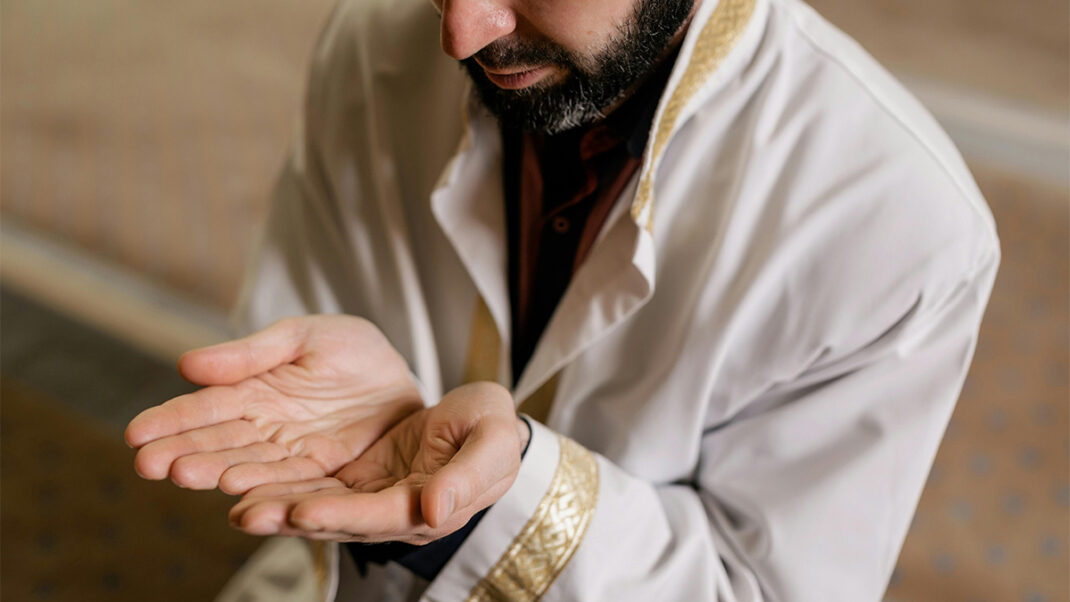
With internment fasting, water intake is allowed, which makes it easier to maintain energy levels relative to fasting without water. However, since Ramadan is an entire month of Islamic fasting with no hydration during fasting hours, increased prayers and decreased amounts of sleep, individuals can experience a loss of energy. This is especially true if the body is not hydrated properly during non-fasting hours, if low-nutrition foods are ingested or if lost sleep is not recovered.
The first week can be a challenge, as it may take time to adjust to new eating and sleeping patterns. The second and third weeks can become more adaptable, while the last week can be challenging again due to lost sleep. In line with this, research shows that Muslims experience increased fatigue towards the end of Ramadan. According to a study done on trained cyclists, Chamari and colleagues (2016) found that cyclists perceived increased fatigue and delayed onset muscle soreness (DOMS) with RF.
Cognitive function can also be impacted during RF as the body adjusts to the new schedule, sleep and eating patterns. Since the circadian pattern of body temperature changes during Ramadan, it can also be associated with alterations in the circadian pattern of melatonin secretion (Qasari et al. 2017). Carbohydrate intake can be impacted, along with the schedule changes for sleep and meal times, which may affect both cortisol and melatonin levels. The decrease of glucose supplies can decrease melatonin synthesis, and the lack of sleep can increase nocturnal cortisol levels (Qasari et al. 2017). This is why it is crucial to eat nutritious food and adapt exercise movements during this month.
Muslim clients with regular migraines could also feel the impact of RF, as it takes time for the body to adjust. With this in mind, Gabr and colleagues (2013) conducted a study in patients with migraines during Rajab, Shab’an and Ramadan (Rajab and Shab’an are the Islamic months prior to Ramadan, during which some may fast to prepare for Ramadan). The study found that most of those with migraines during Ramadan fasting drank caffeine, smoked cigarettes, had overweight or obesity, were under stress, or had low-to-moderate physical activity levels (Gabr et al. 2013). The researchers also found that migraines tend to occur during evening hours. However, patients who began fasting before Ramadan were able to adapt more; therefore, the study concluded that there were no negative effects of RF on migraine sufferers (Gabr et al. 2013).
Training During Ramadan
Ramadan can be taxing on the body, making it more important to focus on the quality of exercises performed. The potential times of training during Ramadan can be either the morning after the suhoor meal, right before or after iftar, the afternoon, or before the suhoor meal at night. According to a study by Farooq and associates (2021), the average daily step count was decreased significantly for individuals undertaking RF. Further, the researchers showed that in contrast to non-fasting participants who preferred early morning workouts, fasting participants preferred evening workouts due to the timing of rehydration and refueling the body with nutrition.
To maintain progress, fitness professionals can guide their clients by decreasing training load, reps and intensity, rather than cutting out entire workout routines. Shortening the duration of the workout is another way to ensure your client is not overexerting and can keep up with training during Ramadan. It is best to avoid HIIT workouts, Tabata workouts, and cardio since these are higher intensity and require constant rehydration. However, strength training, corrective exercises, and functional exercises are great options, since they all assist with mobility. These exercise modalities help the muscles, fascia, and joints stay healthy during fasting hours and throughout the month. Yoga and Pilates are also beneficial routines to incorporate into clients’ schedules, as they are performed at a lower intensity and include mobility exercises that help with flexibility.
It is important to take care of myofascial tissue, engage in core exercises and generally slow down during Ramadan (Alghazzouli 2019a). The physical aspects of Islamic prayer can be a challenge for Muslims, especially those with knee and back pain, since Islamic prayer includes standing up, bowing down, prostrating on the ground, and getting back up to repeat the prayer. This is why many Muslims with major knee and back pain choose to pray while sitting.
Some Muslim clients may experience other joint and movement-related pain with increased prayer (Alghazzouli 2019b). One solution might be to suggest yoga and Pilates. For example, if a client is already weightlifting three times/week, they can add one day of yoga and another day of Pilates, while decreasing the training load for the weightlifting days. Similarly, if a client attends HIIT classes at least once a week, they can either choose to replace the class with another format or continue HIIT with adjusted intensity and breaks.
One study on athletes during Ramadan suggests training athletes either right before iftar time—in order to rehydrate right away—or before suhoor meal to refuel (Shephard 2013). This helps to supply dietary protein to support the synthesis of muscle tissue.
Remember: With training, there is no one size fits all. Look at what works best for your clients and class participants. Ask your clients how they would like to continue their training program during Ramadan, and encourage them to continue—maintaining movement is important during this time! Assure them that it is completely safe to exercise during Ramadan, with a pre-participation screening from doctors, if needed, and with the guidance of a certified fitness professional.
Nutrition and Hydration
When it comes to nutrition and hydration, fitness professionals must always stay within their scope of practice while providing guidance to their clients during Ramadan. The majority of Muslims around the world break their fast with water and a date, which comes from the sunnah of Prophet Muhammad (PBH).

Dates have a high nutritional value and are rich in carbohydrates, dietary fibers, proteins, minerals, and many vitamins including B complex (Ayad et al. 2020). Carbohydrates comprise 70% of the caloric value of dates, mainly as fructose and glucose. In addition, dates are rich in calcium, iron, magnesium, selenium, copper, phosphorus, potassium, zinc, sulfur, cobalt, fluorine and manganese (Ayad et al. 2020). There are various protein and snack bars that include dates in them as well, since it has become a popular flavor.
As for water intake, adding lemon with or without Himalayan salt can be incredibly refreshing, and it provides natural electrolytes. One easy way to incorporate protein with healthy carbohydrates is with protein shakes or nutritious smoothies. These can be ingested after iftar and prepared for the suhoor meal so that they are easy to grab and drink in the morning.
Another great source to include in the dietary plan during RF is milk, which is also included in the Quran (Chapter 16, verse 67). Milk is a great nutrient source because it contains high levels of proteins, carbohydrates, water, and electrolytes such as sodium and potassium (James et al. 2019). In addition, milk has a high Beverage Hydration Index (BHI) because of its protein content (James 2012). According to research by Seery & Jakeman (2016), milk can keep the body hydrated up to five hours. This is why breaking the fast with milk, or having it at suhoor, can be helpful during Ramadan (Mahmood & Carmichael 2020).
Coffee drinkers might find RF to be challenging. This is a common concern for Muslims around Ramadan. The good news is that coffee drinkers can continue drinking their coffee during Ramadan without the added creams, sugars and espresso shots. In fact, a study by Gabr and colleagues (2013) recommends strong coffee before the start of the fast to prevent headaches.
See also: The Low-Down on Fasting and Meal Timing
Recovery and Body Composition
According to a study on cyclists, researchers found that athletes who maintain their total sleep can also maintain their cognitive performance (Chamari et al. 2016). Their research confirms that the duration of sleep during Ramadan does decrease (Chamari et al. 2016). Taking a short nap during the day and/or early morning after the suhoor meal can be helpful for the lost sleep hours during the night. According to the sunnah, it is narrated from Prophet Muhammad (PBH) that “your body has a right over you, your eyes have a right over you and your family has a right over you,” (Sahih Bukhari, Book #62, Hadith #127). Therefore, making time to work on recovery is essential during Ramadan.
As mentioned earlier, the last ten nights include I’tikfaf, which is a spiritual retreat done at night to connect with God. This concept is similar in some ways to meditation and mindfulness practices, which many people enjoy for mental, physical and spiritual health. Fitness coaches working with Muslim clients throughout the year can inspire and motivate their clients to incorporate mindfulness and meditation into their training program as a recovery method. Clients who are looking to lose weight can also benefit from incorporating mindful eating strategies during Ramadan.
Correia and associates (2021) found that RF helps with body weight management, although non-RF (i.e. internment fasting) appears to be more effective for improving overall body composition. The greater loss of body fluids in people with overweight or who have a higher BMI could be one reason why these individuals tend to see a larger relative decrease in BMI, fat mass and body weight with RF (Correia et al. 2021).
Cultural Sensitivity and Communication for Training During Ramadan
Fitness professionals working with Muslim clients can help them feel more welcomed, heard, seen and understood when their religious holidays are acknowledged. This positivity continues when you can show that you are understanding of their religious practices. Personal trainers working with Muslim clients one-on-one may ask if their client needs help with their training program around Ramadan time, as well as other days in the Islamic calendar.
It is helpful for group fitness instructors to recognize that Muslim participants might not be able to push themselves as hard during Ramadan or when fasting outside of Ramadan. When giving instructions and motivational reminders during the workout, instructors can be understanding of Islamic fasting by providing modified exercises at a lower intensity.
Before a group session begins, fitness instructors may want to ask their participants if anyone is participating in Ramadan and, if so, whether they need help or support around their workouts. Group fitness instructors can ask their participants if they partake in any Islamic fasting outside of Ramadan as well. As mentioned, while Ramadan includes fasting all month long, it is not the only month when fasting occurs.
Additionally, if there are women who need to make up their missed fasting days outside of Ramadan, they may be intimidated by group fitness classes. Therefore, understanding their religious practices and adjusting as needed can help fitness instructors make these participants feel welcomed and understood.
Yoga teachers can also put this awareness into practice: “Namaste” is often used at the end of a yoga session, but Muslims cannot say this word as it conflicts with their pillars of faith. Further, while a Muslim participant may put their hands together, they cannot bow down since this action is only done during prayer time.
Note that yoga can often be a sensitive topic within Muslim communities. Some Muslims believe yoga is not allowed in Islam, while others find it acceptable if they do not fully subscribe to the full teachings of yoga (i.e., they may prefer to inhale, put their hands together, and exhale without saying “namaste” or bowing down).
Finally, fitness professionals can share resources and provide accommodations for Muslim clients who participate in Ramadan or Islamic fasting. Studio owners may benefit from adding women-only workout sessions for Muslim participants who prefer to be around other women only. When it comes to working with Muslim female clients or Muslim female fitness professionals, it’s important to know that they may not shake hands with male fitness professionals due to religious practices.
See also: The Art and Science of Intermittent Fasting
Post-Ramadan Training and Considerations
Following Ramadan, there is the Eid Al Fitr celebration immediately after and Eid Al Adha three months after. Fitness professionals and studio owners can keep these religious holidays in mind to plan around these times.
If a studio owner has Muslim members, these holidays can provide an opportunity for members to come together and celebrate with a fun workout. Studio owners can collaborate with local Muslim fitness coaches to create something fun for the community, which can double as a way to build a referral system.
Fitness professionals can also provide educational resources to clients, gym participants and work places. This is a great opportunity to collaborate with local dietitians, fitness coaches, mental health professionals, doctors and other wellness professionals. According to Hassanein and colleagues (2022), the need for pre-Ramadan education is still high, as only 30–67% of physicians used Ramadan-focused educational programs. It was found that, for patients with type 2 diabetes, pre-Ramadan education sessions were associated with a decrease in the incidence of hypoglycemia and HbA1c levels when compared to controls (Hassanein et al. 2022).
Just as it is important to prepare for Ramadan, it is also important to continue the conversation afterwards. Studies have shown that it takes at least 2-4 weeks after Ramadan for Muslims to get back to their regular schedules (Farooq et al. 2021). According to Farooq and colleagues (2021), it takes four weeks after Ramadan for step counts to finally return to pre-Ramadan levels. This delayed return to normal physical activity levels may be due to participation in another voluntarily fasting, which happens after Ramadan during the month of Shawaal. Although the research is limited, fitness coaches should be aware of these delays and the implication for their clients.
For non-Muslim readers, think of Eid Al Adha as end-of-the-year holidays in America. There are many programs created to help Americans cope with holiday stress, the fall season and the increased amount of feasting during these months. Ramadan and the three months afterwards are a similar concept for Muslims.
Bringing It All Together
Remember, customization is key when training during Ramadan: Tailor training programs for each individual needs and preferences, and communicate openly to ensure a supportive environment for all. By embracing this knowledge, you can not only help enhance your clients’ training during Ramadan but also use these opportunities to create fitness events that bring communities together, develop interfaith connections and tap into a new market.
References
Alghazzouli, O.K. Apr 17, 2019a, How to regain mobility during Ramadan with Dr. Jen, [Audio podcast], Purposeful Fitness with Coach Ola, https://purposefulfitness.podbean.com/e/how-to-regain-mobility-during-ramadan-with-dr-jen/
Alghazzouli, O.K. Aug 14, 2019b, Knee Pain? How to go about it with Dr. Evan Osar, [Audio podcast], Purposeful Fitness with Coach Ola, https://purposefulfitness.podbean.com/e/knee-pain-how-to-go-about-it-with-dr-evan-osar/
Ayad, A.A., et al. 2020. A review of the chemical composition, nutritional and health benefits of dates for their potential use in energy nutrition bars for athletes. Cogent Food & Agriculture, 6:1. doi.org/10.1080/23311932.2020.1809309
Chamari, K., et al. 2016. Impact of Ramadan intermittent fasting on cognitive function in trained cyclists: A pilot study. Biology of Sport 33(1), 49–56.
Correia, J.M., et al. 2021. Effects of Ramadan and non-Ramadan intermittent fasting on body composition: A systematic review and meta-analysis. Frontiers in Nutrition, (7)26. doi: 10.3389/fnut.2020.625240
Farooq, A., et al. 2021. Ramadan daily intermittent fasting reduces objectively assessed habitual physical activity among adults. BMC Public Health 21, 1912. doi: 10.1186/s12889-021-11961-9
Gabr, W.M., et al. 2013. Effect of fasting during Ramadan on migraine sufferers. Journal of Behavioral and Brain Science, 03(4), 373–378.
Hassanein, M., et al. 2022., Diabetes and Ramadan: Practical guidelines 2021, Diabetes Research and Clinical Practice, 185, https://doi.org/10.1016/j.diabres.2021.109185.
James, L. 2012. Milk protein and the restoration of fluid balance after exercise. Med Sport Sci, 59:120–6. doi.org/10.1159/000341958
James, L.J., et al. 2019. Cow’s milk as a post-exercise recovery drink: implications for performance and health. Eur J Sport Sci, 19(1):40–8.
Mahmood, M. & Carmichael, Z.S. 2020. Milk as a Rehydration Fluid after Fasting during Ramadan. Accessed Feb. 14, 2024: https://www.reviewofreligions.org/22546/milk-as-a-re-hydration-fluid-after-fasting-during-ramadan/
Qasrawi, S.O. et al. 2017. The effect of intermittent fasting during Ramadan on sleep, sleepiness, cognitive function, and circadian rhythm. Sleep & breathing 21(3): 577-586.
Seery, S. & Jakeman, P. 2016. A metered intake of milk following exercise and thermal dehydration restores whole-body net fluid balance better than a carbohydrate-electrolyte solution or water in healthy young men. Br J Nutr.116(6):1013–21.
Shahih al Bukhari 1923. Book 30, Hadith 32. USC-MSA Web (English reference): Volume 3, Book 31, Hadith 146. https://sunnah.com/bukhari:1923.
Shephard, R.J. 2013. Ramadan and Sport: Minimizing Effects Upon the Observant Athlete. Sports Med 43, 1217–1241. https://doi.org/10.1007/s40279-013-0080-7
Sunan an Nasa’I 2289. In book reference: book 22, hadith 200. English translation: vol.3, Book 22, Hadith 2291. https://sunnah.com/nasai:2289
The Quran. www.quran.com
Ola Khaldi Alghazzouli
Ola Khaldi Alghazzouli is the podcast host of the Purposeful Fitness With Coach Ola show, with more than a dozen episodes on Ramadan-specific topics. She is the author of Welcome Ramadan: A Holistic Approach into Welcoming the Blessed Month! and Exciting Infographics & Planner All in One Place, as well as the founder of the #Swim4Akhirah Campaign. She is an ACE Certified Personal Trainer and a swim instructor. She enjoys teaching aquafitness and dryland classes, and she is always open to learning new formats. Swimming in Ramadan and intermittent fasting for swimmers is also available on her YouTube channel @BeFit4Akhirah.


